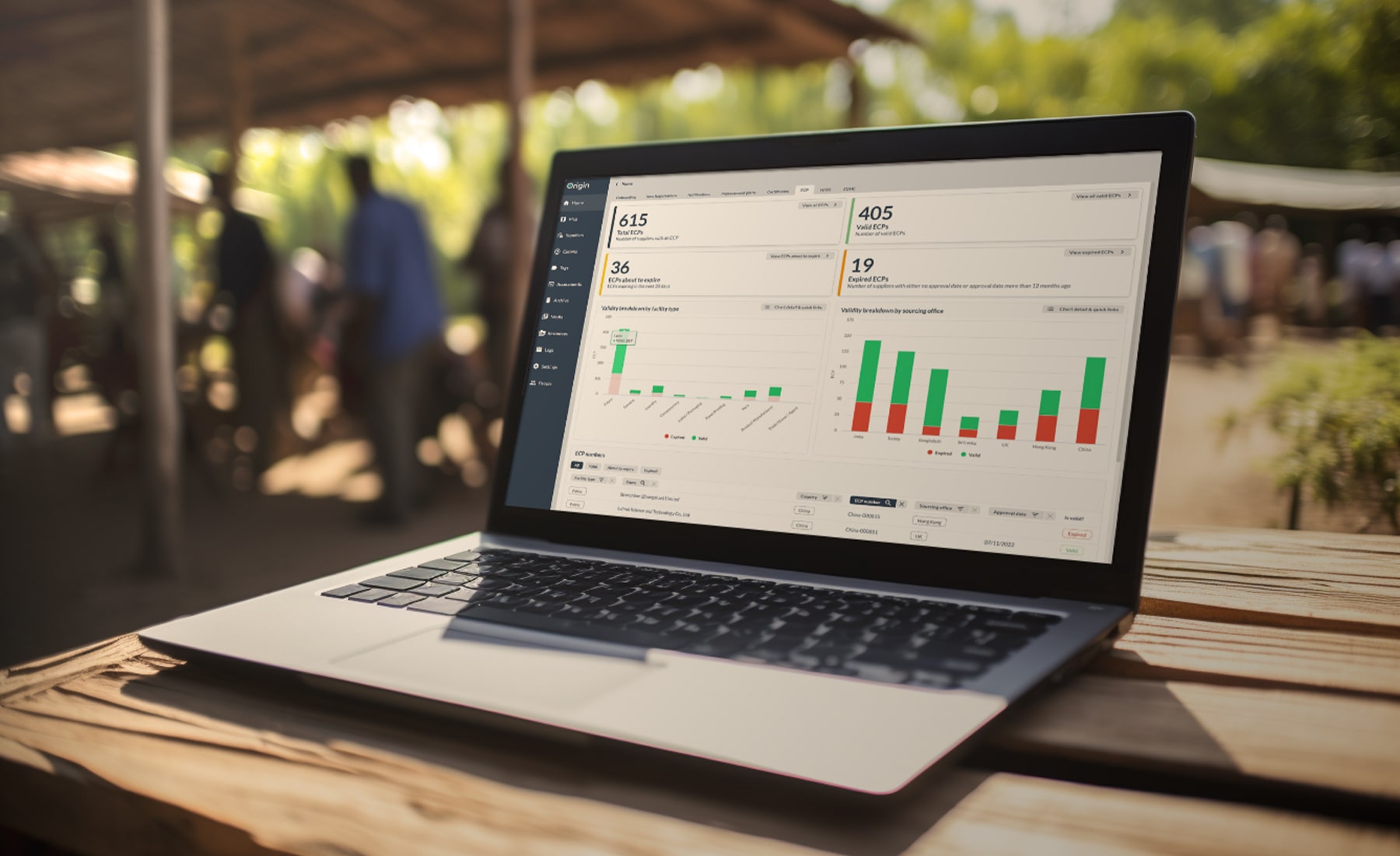
Building effective grievance mechanisms: ten things to consider
The ability for an individual or group to report that they have been harmed by a company’s activities or relationships is a fundamental requirement in any responsible business. And yet, according to the International Labour Organisation (ILO), only 19% of workers in global supply chains have access to a grievance mechanism. This means that most workers are unable to report unsafe working conditions, discrimination, or other labour and human rights abuses.
With a fast-growing regulatory environment that requires companies to identify and manage their human rights and environmental impacts, the role of an effective grievance mechanism has become more prominent. But there remains a large gap between what is required in due diligence laws like the LkSG and what most companies have in place, a gap between policy and practice.
In this Insight, James Lewry, Director at Kumi Consulting, London, explores the practical considerations when designing and implementing an effective grievance mechanism.
Europe’s growing supply chain due diligence laws
In the evolving landscape of European supply chain regulation, there’s been a big move from “soft law” advisory guidelines, such as the UN Guiding Principles and OECD Guidelines, to legally enforceable standards for corporate responsibility, particularly in human rights and environmental impact. Germany’s Supply Chain Act (LkSG), which came into effect in January 2023, is a good example of this shift, which mandates global supply chain reviews to mitigate risks related to human rights and the environment. Similarly, the EU’s Corporate Sustainability Due Diligence Directive (CS3D) is set to broaden these requirements across member states.
An often overlooked, yet critical part of these acts is the requirement for companies to establish grievance mechanisms, that enable stakeholders such as workers, suppliers and NGOs to report violations of their rights. But many businesses are struggling with compliance. A 2022 European Commission survey revealed that only 20% of relevant companies felt fully prepared for the CS3D’s demands, citing lack of clarity, resource limitations and compliance costs as major challenges. A similar survey by MSCI found that less than half of the companies facing human rights allegations had grievance mechanisms in place.
What is a grievance mechanism?
A grievance mechanism is simply a formal system or process that allows individuals or groups, such as employees, suppliers or communities, to raise concerns that a company’s activities – or those which they are linked to – have impacted their rights. These mechanisms can be used to resolve disputes, investigate allegations of abuse and provide remedies for those who have been impacted. They typically involve different channels for raising a grievance, which can include a company’s own HR processes, a phoneline, a website or an independent body that can investigate complaints and provide recommendations for resolution. Or it can include community-based mechanisms that involve committees who represent people’s concerns.
As challenging as designing such mechanisms may sound, there are some very good business reasons to do so beyond just compliance. They can be effective risk management tools, providing information about the root causes of risks or provide outlets to prevent escalation of grievances by other means. Workers who don’t have access to a legitimate grievance mechanism, or who fear reprisal by an employer if they report concerns with their working conditions, may take industrial action or seek collective litigation in the case of serious rights abuses. It’s perhaps no surprise that if you build trust and good relationships with stakeholders, you can identify and resolve issues before they escalate, reducing legal, financial, and reputational risks.
In 2021, a legal representative for children who had been working in cobalt mines in the DRC filed a lawsuit against a US automotive company. The children alleged that they had been subjected to forced labour and other human rights abuses. While the company had a grievance mechanism in place, it wasn’t accessible to all workers and only allowed abuses to be reported through the company’s website. It wasn’t legitimate, as it relied on the company to investigate and resolve issues, and there was no clear information on resolution or timeframes, including how workers could challenge decisions made, or information on the outcomes of grievances. Ultimately, there was no trust and workers escalated their concerns through legal action.

Considerations for designing an effective mechanism
1. Make the grievance mechanism part of your due diligence strategy
Don’t view a grievance mechanism only as a regulatory requirement. Integrate it into your broader strategy for responsible sourcing and human rights due diligence. This acknowledges the value of a grievance mechanism in identifying and mitigating risks throughout the supply chain. You might use insights from grievance data to inform strategic planning, identifying areas of the supply chain that require more oversight or support, preventing issues before they arise and ensuring alignment with the UN Guiding Principles on Business and Human Rights.
2. Engage with stakeholders to understand their needs
Active engagement with stakeholders, such as employees, communities and NGOs, is critical in developing a picture not just of how these groups may be impacted by your business, but also to understand their needs and communication preferences for your mechanism. This could involve meetings with workers and trade unions to discuss working conditions, engaging with civil society organisations to understand risks or conducting surveys with communities.
Consider the possible lack of agency of stakeholders using your mechanism. People whose rights have been impacted, particularly by abusive working conditions, may be impacted further if your mechanism doesn’t address anonymity and fear of reprisal. Consider stakeholder protection and include options to use independent parties to escalate serious grievances.
3. Make sure your grievance channels are accessible
When designing the grievance mechanism, consider all the barriers that your stakeholders may encounter when using it, such as language, literacy, and access to technology. Again, engaging with your stakeholders to understand their preferences will allow you to select all appropriate channels, including phone lines, surveys, committees and other forms of engagement. This will ensure that the mechanism can cater to different preferences and capabilities, ensuring that even workers in remote areas or with limited tech access can report issues.
4. Communicate your mechanism so people know how to use it
It may seem obvious that if stakeholders don’t know how to report an issue or are unsure what happens if they do so, the mechanism won’t be used. Low or no engagement in grievance channels is often a sign that a mechanism doesn’t work or has been poorly communicated. Effective mechanisms are those that are trusted by stakeholders across the supply chain, who understand how to report grievances, so communicate your mechanism widely. Make sure that those in managerial positions or operating grievance channels are trained to handle reports sensitively and effectively.
5. Build trust by developing independent channels and considering partners
Your mechanism should be perceived as fair and impartial. Involving external parties in its design and oversight can enhance legitimacy. For instance, there may be some countries where partnering with a local NGO to manage the grievance process may enhance stakeholder trust by ensuring independence from your local operations and management.
For example, Nestlé, the world’s largest food and beverage company, partnered with the ILO to provide grievance handling services for its cocoa farmers in some countries. The ILO helps farmers understand their rights and provides them with a way to report violations. The ILO’s grievance handling services have been used by hundreds of farmers in Nestlé’s supply chain, and most of these complaints have been resolved through mediation or conciliation. In a few cases, the ILO has taken legal action against companies that violate labour laws.
6. Make sure the process for raising a grievance is predictable
Design your grievance process so that it has clear steps and expected timeframes for resolution and give updates to stakeholders raising grievances. Include this in training and communication but also when the grievance is raised so that stakeholders understand what will happen next. This predictability ensures that every stakeholder, regardless of their location, feels valued and heard, promoting equity and preventing the escalation of issues.
7. Support your suppliers in developing their own mechanisms
You may extend channels of your mechanism to some indirect, high-risk suppliers, but you should also require suppliers to have their own grievance mechanisms to address issues. Give practical guidance on how to develop and implement grievance channels effectively and provide education on the value and benefits of doing so. This may include capacity building and training and should also include guidance on how to test the mechanism’s effectiveness.
8. Use appropriate remediation strategies beyond compensation
Have a process for remedy that is appropriate and rights compatible. Think beyond financial compensation. Remediation is about the restoration of rights and in many cases can involve just an acknowledgement or apology by a company, letting people know your plan to address the business activity that caused the issue.
9. Monitor your mechanism and use feedback to improve it
Review how the grievance mechanism is being used and whether it’s effective. Track the number of grievances raised, the resolution rate, and the satisfaction of those who used the mechanism. You may consider annual surveys to capture how stakeholders perceive the mechanism’s effectiveness and use data in external reporting to promote transparency. Use this feedback to improve business practices and create a loop where your mechanism not only resolves grievances but also helps with systemic improvements in your company and its supply chain.
10. Use technology, but don’t forget the human!
When used effectively, technology such as apps, messaging, call lines, and case management software can really help stakeholders to raise issues more effectively. It can also help businesses to track grievance cases and remain in contact with stakeholders while the grievance is being remediated. But while technology can play this important role, it can’t be effective on its own and can give a false sense of assurance if used in this way. Assessing the severity of a grievance or the suitability of a remedy needs human judgment, empathy and ethical considerations.
Building trust and managing risk
- The move from soft to hard law on supply chain due diligence is well underway. All current and forthcoming due diligence regulations require engagement with stakeholders to address environmental and social impacts.
- This means understanding your impacts on your suppliers, employees, communities and other stakeholders in your business. It also means developing a grievance mechanism that has effective channels to allow for the concerns of those stakeholders to be heard and issues remediated effectively.
- An effective grievance mechanism will not only ensure that your business complies with new requirements but also, if designed carefully, can enhance trust with your stakeholders and be a powerful tool in your risk and due diligence toolkit.

